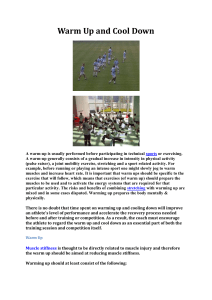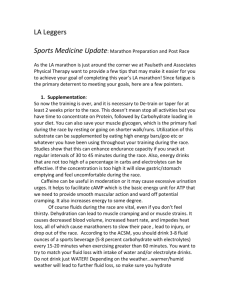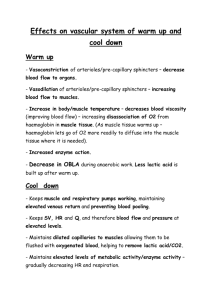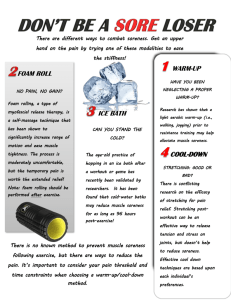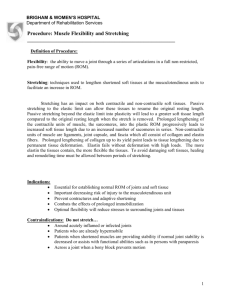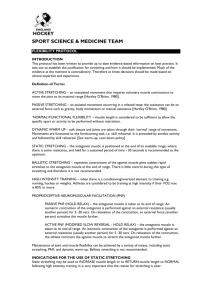Warm Up and Cool Down
advertisement
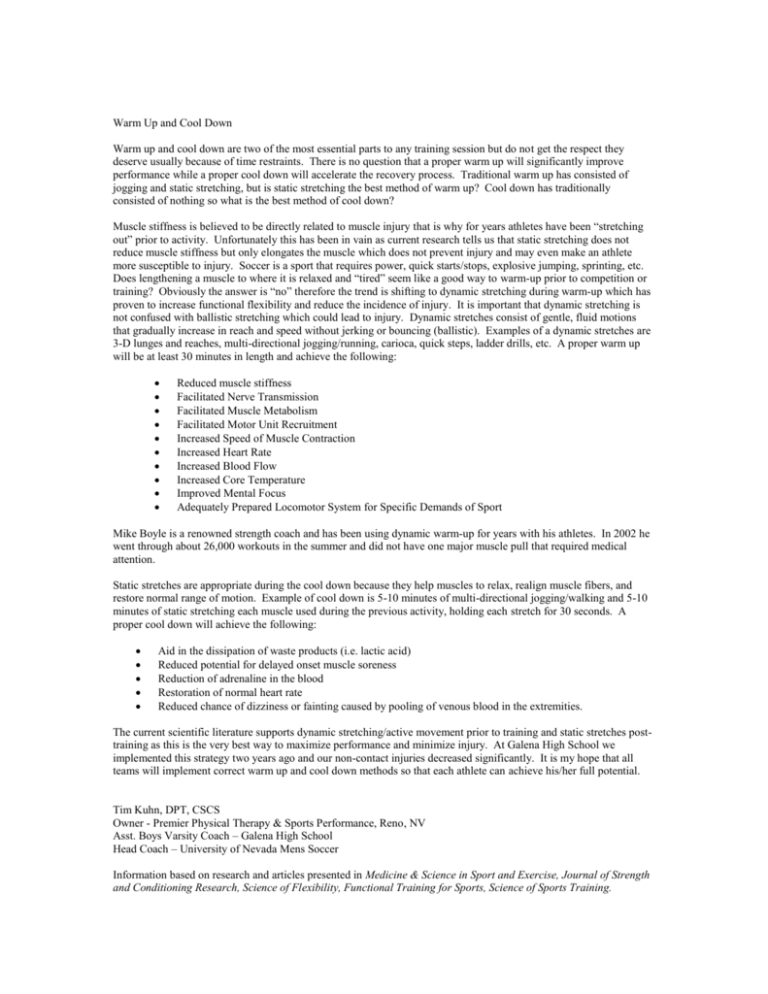
Warm Up and Cool Down Warm up and cool down are two of the most essential parts to any training session but do not get the respect they deserve usually because of time restraints. There is no question that a proper warm up will significantly improve performance while a proper cool down will accelerate the recovery process. Traditional warm up has consisted of jogging and static stretching, but is static stretching the best method of warm up? Cool down has traditionally consisted of nothing so what is the best method of cool down? Muscle stiffness is believed to be directly related to muscle injury that is why for years athletes have been “stretching out” prior to activity. Unfortunately this has been in vain as current research tells us that static stretching does not reduce muscle stiffness but only elongates the muscle which does not prevent injury and may even make an athlete more susceptible to injury. Soccer is a sport that requires power, quick starts/stops, explosive jumping, sprinting, etc. Does lengthening a muscle to where it is relaxed and “tired” seem like a good way to warm-up prior to competition or training? Obviously the answer is “no” therefore the trend is shifting to dynamic stretching during warm-up which has proven to increase functional flexibility and reduce the incidence of injury. It is important that dynamic stretching is not confused with ballistic stretching which could lead to injury. Dynamic stretches consist of gentle, fluid motions that gradually increase in reach and speed without jerking or bouncing (ballistic). Examples of a dynamic stretches are 3-D lunges and reaches, multi-directional jogging/running, carioca, quick steps, ladder drills, etc. A proper warm up will be at least 30 minutes in length and achieve the following: Reduced muscle stiffness Facilitated Nerve Transmission Facilitated Muscle Metabolism Facilitated Motor Unit Recruitment Increased Speed of Muscle Contraction Increased Heart Rate Increased Blood Flow Increased Core Temperature Improved Mental Focus Adequately Prepared Locomotor System for Specific Demands of Sport Mike Boyle is a renowned strength coach and has been using dynamic warm-up for years with his athletes. In 2002 he went through about 26,000 workouts in the summer and did not have one major muscle pull that required medical attention. Static stretches are appropriate during the cool down because they help muscles to relax, realign muscle fibers, and restore normal range of motion. Example of cool down is 5-10 minutes of multi-directional jogging/walking and 5-10 minutes of static stretching each muscle used during the previous activity, holding each stretch for 30 seconds. A proper cool down will achieve the following: Aid in the dissipation of waste products (i.e. lactic acid) Reduced potential for delayed onset muscle soreness Reduction of adrenaline in the blood Restoration of normal heart rate Reduced chance of dizziness or fainting caused by pooling of venous blood in the extremities. The current scientific literature supports dynamic stretching/active movement prior to training and static stretches posttraining as this is the very best way to maximize performance and minimize injury. At Galena High School we implemented this strategy two years ago and our non-contact injuries decreased significantly. It is my hope that all teams will implement correct warm up and cool down methods so that each athlete can achieve his/her full potential. Tim Kuhn, DPT, CSCS Owner - Premier Physical Therapy & Sports Performance, Reno, NV Asst. Boys Varsity Coach – Galena High School Head Coach – University of Nevada Mens Soccer Information based on research and articles presented in Medicine & Science in Sport and Exercise, Journal of Strength and Conditioning Research, Science of Flexibility, Functional Training for Sports, Science of Sports Training.

